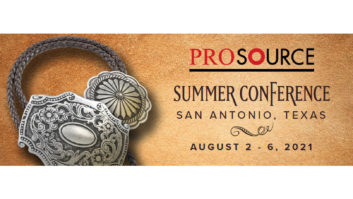With services becoming commoditized, it’s time for specialty retailers “to move to a new echelon of value” in which they stage in-store experiences for consumers and charge admission to them, consultant B. Joseph Pine told dealers during the PARA conference.
Retailers should “use goods as props and services as a stage . to engage the customer in an inherently personal way,” he said, defining an experience as a memorable event.
Pine pointed to Seattle-based retailer Recreational Equipment Inc., whose stores incorporate mountains, hiking and cross-country ski trails, and rainforest rooms that let consumers “experience the goods before they buy,” albeit in some cases for a fee.
He also cited a pediatric dentist whose jungle-theme office décor has reduced cancellations, a skateboard store whose square footage is taken up mostly by ramps that consumers pay to use, and an Ontario, Calif., mall that’s anchored by an Imax theater and other businesses that stage experiences.
Retailers can charge for an experience in different ways, he said. One way is to charge for an in-store event, perhaps an Academy Award night for which copyright clearance might be negotiated in advance by an industry association such as PARA, he said.
“If the experience was worth it, they’ll get an adrenaline rush, which creates a bond with you, and they’re more likely to buy from you,” he claimed.
“Charge admission to the entire store only if you have big bucks to spend on an experience,” he warned. Otherwise, pursuing an appointment-only strategy is a “positive cue tantamount to an admission fee.”
Another way to create an experience is through mass customization, he said. GNC Nutrition Centers, for example, customize daily vitamin packs for customers in which each day’s supply of vitamins is packaged in a sealed plastic envelope. Every month, GNC automatically sends 30 packages to its customers.
The essence of mass customization is to modularize choices so that customers get exactly what they need. In doing so, he said, “mass customization can cost you less, and you can charge more.”
To create a successful in-store experience, retailers should stick to a theme in their stores, but the theme must be “about who you are” so that it’s believable, he said, referring to newspaper pictures of presidential candidate Michael Dukakis riding in a tank. Retailers also should mix in free or paid-for memorabilia that consumers can take with them to remind them of the experience, he added.
To show how they create an in-store experience, Gary McCormick of Indianapolis’s Ovation Audio/Video and Brian Hudkins of Gramophone in Timonium, Md., displayed pictures of home interiors they built inside their stores to demonstrate home theaters and custom-installation systems. McCormick’s in-store home also included an exterior with patio. — Joseph Palenchar









